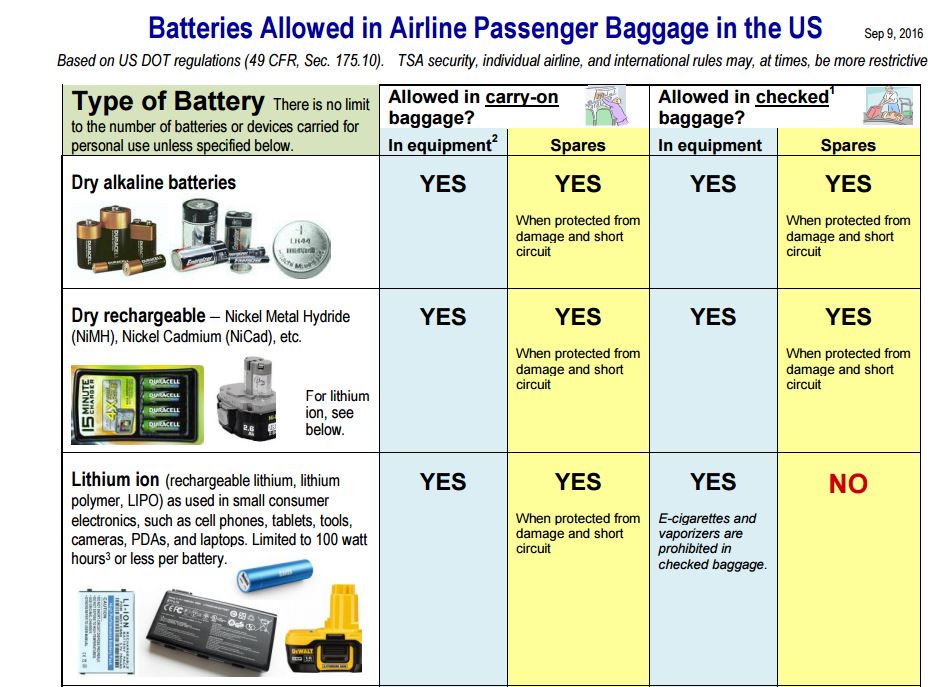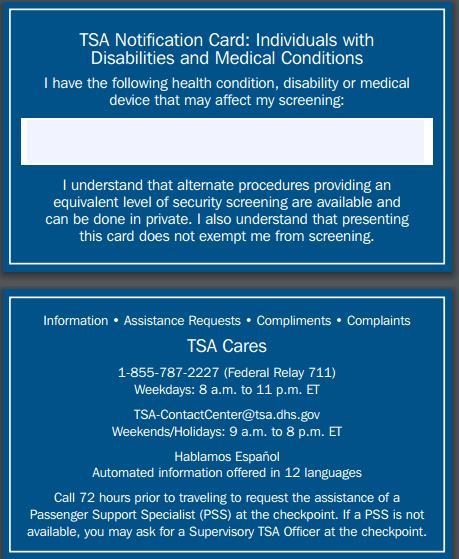This post, originally published in April of 2017, is “most read and shared,” though perhaps not “best.”
Despite United’s persistent efforts to discourage air travel for people who are teenagers, wear leggings, or have assigned seats, it’s likely that many readers have a trip planned by air in the near future. Those who wear hearing aids may wonder what’s in store for them, their hearing aids, and their batteries when checking luggage, clearing security, and getting airborne.
Don’t worry — even United won’t remove you for wearing hearing aids or carrying extra batteries, even if you’re a teenager. But there are a few rules and regs to keep in mind.
Homeland Security, TSA, different airports, different airlines, differently-equipped planes, domestic flights, international travel — all have requirements for electronics devices and power supplies. It’s hard to keep up with the requirements, which vary for according to agency, airline, country, equipment, and year. And, of course, ear level technology keeps changing as well.
Here are a few nuggets to help with your travel plans this year.
Packing Your Bags
If you pack your hearing aids or a back-up set in carry-on luggage, TSA may subject them to additional screening, at their discretion.
Odds are that you’ll probably wear your hearing aids and carry your Smartphone onto the plane. So, packing concerns are mainly about extra batteries. As Table 1 shows, you’re good to go so long as the spare batteries are packed in your carry-on bag. If they are for personal use, the number you carry on are not restricted.
If your hearing aids operate on replaceable zinc-air batteries (e.g., 10A, 312A, 13A, 675A), you can put those in your checked baggage as well. Not so if you use the Lithium ion (Li-ion) rechargeable batteries, which are fine in your hearing aids and carry-on (so long as they are not loose), but can’t be packed as spares in checked luggage unless they’re in a set of hearing aids.
Those are the general guidelines. But also note the fine print in the second from top line of Table 1:
“TSA security, individual airline, and international rules may, at times, be more restrictive.”
More on Li-ion Batteries
A travel website offers the following safety recommendations for using and traveling with Li-ion batteries.
- Buy your batteries from reputable sources and look for the mark of independent testing such as the Underwriters Laboratories (UL) or International Electrotechnical Commission (IEC). Counterfeit batteries are more likely to cause a fire in your equipment.
- If you are carrying spare batteries, keep them in your carry-on luggage.
- Prevent potential short-circuiting by keeping the batteries in their original retail packaging or by placing tape across the contacts to isolate the terminals.
- Keep each battery away from other batteries and metal objects such as coins, keys, and jewelry.
- Pack your batteries carefully to avoid crushing, puncturing, or any high degree of pressure on the battery, which can result in an internal short-circuit and risk overheating and fire.
- If you pack a device containing batteries, secure the device against accidental activation by locking it, placing it in a protective case, etc.”
Getting Through Security Screening
The two chief take-homes are:
- You don’t need to remove hearing aids or the exterior component of a cochlear implant at security checkpoints.
- Wear your hearing devices while going through the screenings. Hearing aids are not harmed by “X-rays, walk-through metal detectors, full-body scanners, or hand-help detection devices.”
According to the “Deaf or Hard of Hearing” section on TSA’s website, you should:
- “Inform the TSA officer if you are deaf or hard of hearing and require assistance with the screening process. You may provide a TSA notification card or other medical documentation to inform the TSA officer.” (Fig 1)
- “you are not required to remove any hearing aids or cochlear implants. Additional screening, including a pat-down or inspection of a device, may be required if it alarms a walk-through metal detector or appears as an anomaly when screened by advanced imaging technology.”
Once You’re Airborne
The FAA exempts hearing aids from the rules governing other portable electronic devices. Besides their obvious health-related functionality, the exemption is because the signals from hearing aids and other health devices such as pacemakers don’t interfere with aircraft controls and communication.
New Bluetooth hearing aids that communicate via Smartphone apps are not quite the same thing. The FAA updates its rules periodically to keep pace with technological advances of this kind. It loosened requirementsfor personal electronics in October 2013. The present stance, which will surely change as aircraft change, states:
Devices must be used in airplane mode or with the cellular connection disabled. You may use the WiFi connection on your device if the plane has an installed WiFi system and the airline allows its use. You can also continue to use short-range Bluetooth accessories, like wireless keyboards.
It is with this in mind that hearing aid instruction manuals for Bluetooth-equipped hearing aids have added another page to their instructions. For instance, the Oticon OPN instruction manual has this to say on page 51: “Use on Aircraft • Your hearing aid contains Bluetooth. On board an aircraft, flight mode must be activated, unless Bluetooth is permitted by the flight personnel.”
This brings up a new twist for Bluetooth users on planes. Streaming content from your iPad to your hearing aids is a good way to pass the time on a long flight, but is also a good way to use up power on all devices. While it’s easy enough to pop spare batteries into your hearing aids, it’s not as easy to charge the iPad. A dead iPad is usually just a nuisance, but it’s more than that when it comes to TSA. According to a Forbes article on the topic:
“Travelers heading back to the United States from an overseas trip through certain airports are going to need to make certain that their phone, tablet, or laptop is still powered up enough to turn on for the TSA inspectors. This can be a hassle to ensure, especially after a long flights or heavy usage.”
When in doubt, or when there’s a tight connection between flights, turn off Wifi and Bluetooth.
In Conclusion
Have a good flight. Pack carefully. Hand them your TSA card. Don’t wear leggings. Don’t give up your seat without a fight. If you must fight, be sure to scream loudly, get it on video, and hold on to your hearing aids.
References
FAA. Press Release – FAA to Allow Airlines to Expand Use of Personal Electronics. October 31, 2013.
Tobias MW. How To Make Sure Your Electronic Devices Get Through Airport Security. Forbes, 8/08/2014.
images courtesy of travelinsurancereview.net









